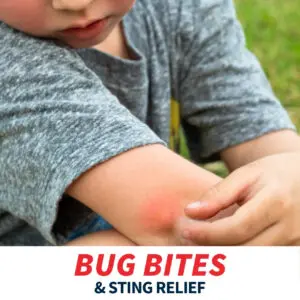Different Nut Allergies
 Although peanuts are the most commonly thought of nut when it comes to severe allergies, there are many other nuts that can pose a dangerous risk for those allergic. Tree nuts are a common allergen for many, and traces of these nuts can be found in many food items. Much like a peanut allergy, even the smallest amount swallowed or inhaled can cause a severe reaction. While they are similar to peanuts, peanuts are technically legumes, not nuts, although some individuals who are allergic to peanuts are allergic to at least one tree nut.
Although peanuts are the most commonly thought of nut when it comes to severe allergies, there are many other nuts that can pose a dangerous risk for those allergic. Tree nuts are a common allergen for many, and traces of these nuts can be found in many food items. Much like a peanut allergy, even the smallest amount swallowed or inhaled can cause a severe reaction. While they are similar to peanuts, peanuts are technically legumes, not nuts, although some individuals who are allergic to peanuts are allergic to at least one tree nut.
What are Tree Nuts?
Tree nuts include several types, such as:
- Almonds
- Brazil nuts
- Cashews
- Chestnuts
- Filberts
- Hazelnuts
- Hickory nuts
- Macadamia nuts
- Pecans
- Pine nuts
- Pistachios
- Walnuts
Tree nuts can be sneaky in many of the foods we eat, so it is vital to pay close attention to labels and ensure you are aware of all of the ingredients if something was homemade. Sometimes, their presence is obvious, like in pistachio ice cream or almond butter, but they can be found in pie crusts, grain breads, honey, veggie burgers, sauces, salad dressings and more. The best bet to avoid an allergic reaction is to avoid them altogether, which means also not using nut butters, pastes, oils, and extracts, like almond extract.
Symptoms of a Nut Allergy
An allergic reaction to tree nuts will become obvious within just a few minutes. Symptoms include:
- Abdominal pain, cramps, nausea and vomiting
- Diarrhea
- Difficulty swallowing
- Itching of the mouth, throat, eyes, skin or any area of the body
- Nasal congestion or runny nose
- Shortness of breath
- Anaphylaxis; a potentially life-threatening reaction.
An anaphylaxis reaction will require immediate medical assistance as it will impair breathing and the body will go into shock. Most people who have this type of reaction should have an injection on-hand at all times, such as the EpiPen, for emergency situations.
Diagnosis and Management
In order to receive an accurate diagnosis, testing will need to be performed with an allergist. Testing may include skin-prick tests or blood tests, but if results are inconclusive, an oral food challenge under the supervision of medical staff may be recommended. Essentially, the patient would test small amounts of the suspected allergen by ingesting, increasing the amount over time to see if a reaction occurs. Emergency medication and equipment should be on hand, so be sure to verify it is available with your doctor before beginning this test.
If you have been found to have a tree nut allergy, the best advice is to simply avoid eating or coming into contact with them. Because this specific allergy is one of the eight most common food allergens, the Food Allergen Labeling and Consumer Protection Act (FALCPA) requires that any presence of these items must be highlighted on ingredients lists. However, the FALCPA does not cover many alcoholic beverages, and some may contain tree nuts or have the flavoring added during distillation, so if there is anything citing “natural flavors” or “botanicals” on the ingredients, contact the manufacturer for clarification or steer clear of the product.
Tree nuts are also commonly found in items that are not edible, such as lotion, hair care and soap. Be sure to read all labels for anything you put in and on your body to avoid reactions. Working with an allergist will also help you learn to identify any hidden sources of tree nuts.
If you have any questions or concerns regarding tree nut allergies, or think you may be allergic, contact us today.




